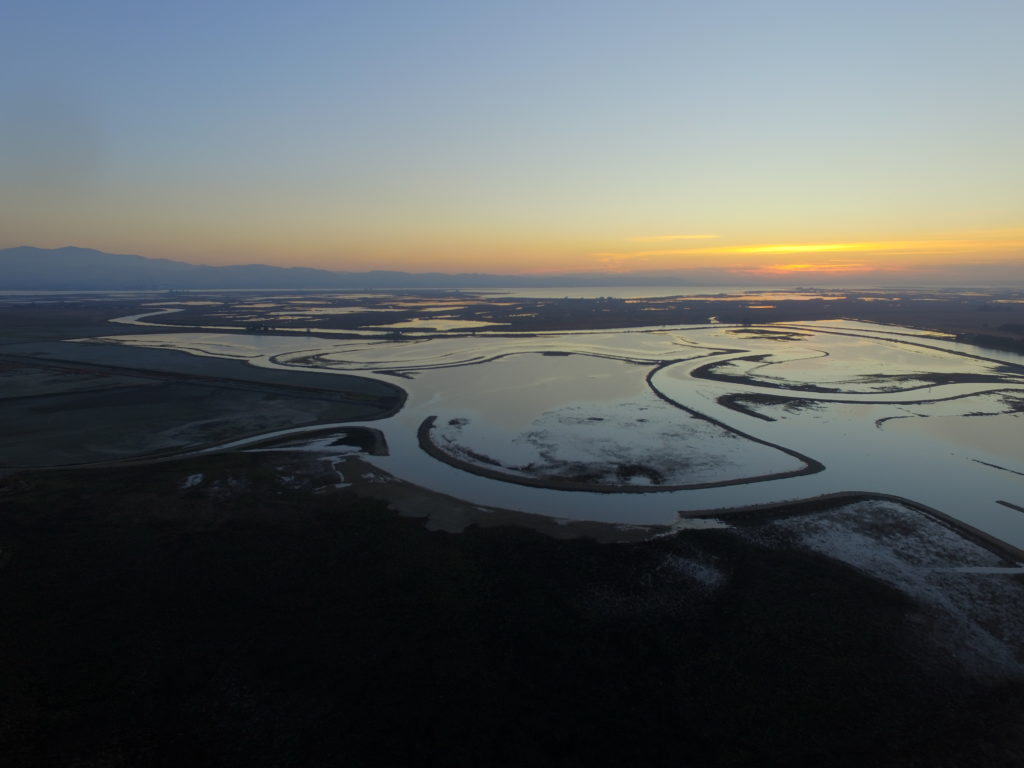The Montezuma Wetlands, located where freshwater and saltwater mix within the San Francisco (SF) Bay Estuary/Delta, once contained one of the most valuable habitats in the SF Bay Region. That is until the late 1800s, when the Montezuma Wetlands were diked for agricultural use, isolating the site from surrounding wildlife. The Montezuma Wetlands Project (MWP), which can be found at the eastern end of the Suisun Marsh, aims to restore 1,800 acres which once boasted pristine wetlands to their original function. Restoring the Montezuma Wetlands to their initial form would have immeasurable benefits on the threatened and endangered species of the San Francisco Bay Area Delta, which is the largest estuary on the West Coast. Due to its one-of-a-kind location within the SF Bay Estuary, restoration of tidal wetlands at the MWP has been described by scientists as vital for meeting the regional recovery goals of many listed species. Some of these special-status species include the salt marsh harvest mouse (Reithrodontomys raviventris), California least terns (Sterna antillarum browni), Delta smelt (Hypomesus transpacificus), longfin smelt (Spirinchus thaleichthys), and various salmonids.
After being diked, the property gradually subsided to elevations as low as 12 feet below sea level. It became clear that site restoration and levee removal would only be possible if the site was raised to specific tidal wetland elevations. The MWP was an early pioneer of the beneficial reuse of dredge sediments, which is now an increasingly common method used to create wetland habitat. The repurposed sediment, dredged from ports, marinas, and navigation channels in the SF Bay Estuary/Delta, and is then transported to the project site by barge. Underpinning the project’s efficiencies, the MWP owns and operates the highest rate sediment offloader west of the Mississippi, with the ability to offload 3,000 cubic yard barges in under 90 minutes. Since receiving its permits in 2001, the Montezuma Wetlands project has safely received over 8 million cubic yards of sediment to raise the first 600-acre phase of the formerly subsided site to ideal target tidal wetland topography. Return of the tides to this first section of the site occurred in October 2020.

DCIM\102MEDIA\DJI_0959.JPG
Permitting the MWP was a decade-long enterprise, and was only made possible by employing the highest caliber technical personnel. Technical work completed for the MWP has been conducted by a variety of consultants and scientists across the region, and overseen by an interagency Technical Review Team (TRT) led by the San Francisco Estuary Institute (SFEI). The TRT still operates today; their duties include reviewing project reports, and providing advice on upcoming plans. The MWP’s development of simple technologies and their integration into efficient 24/7 business operations has made it one of the more prominent beneficial sediment reuse sites in Northern California. The MWP has funded over 15 years of restoration and monitoring work by winning dredge sediment management contracts from the Army Corps of Engineers, local ports, refineries and boat harbors. The MWP is operated by Solano County-based Dutra Dredging, in partnership with the Operating Engineers Union Local 3.